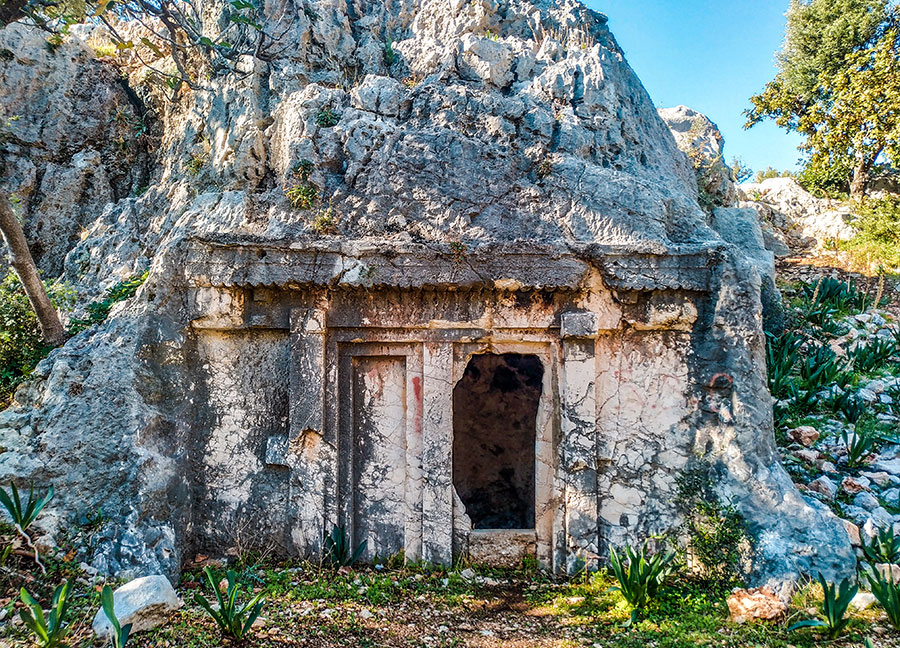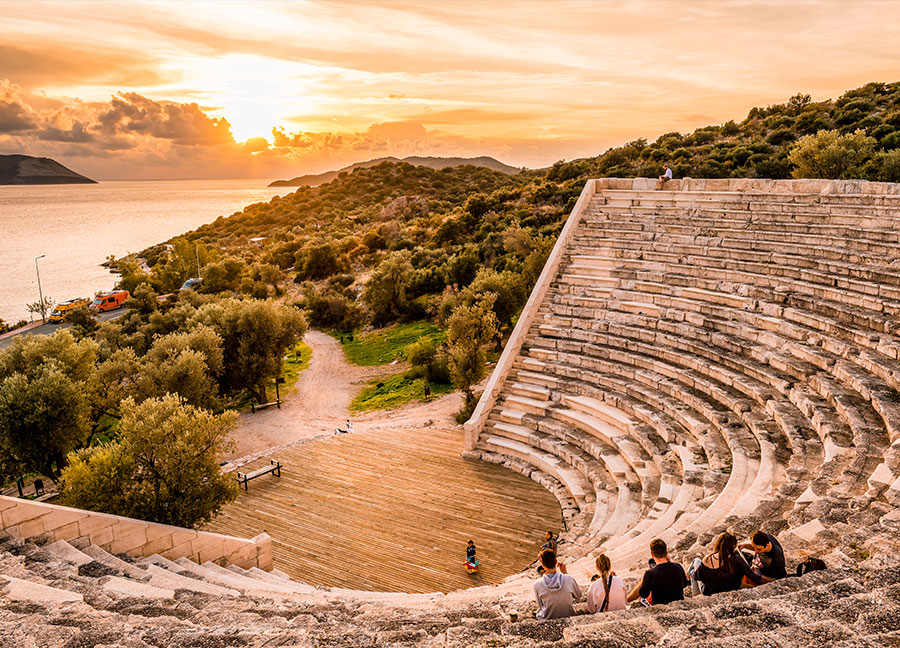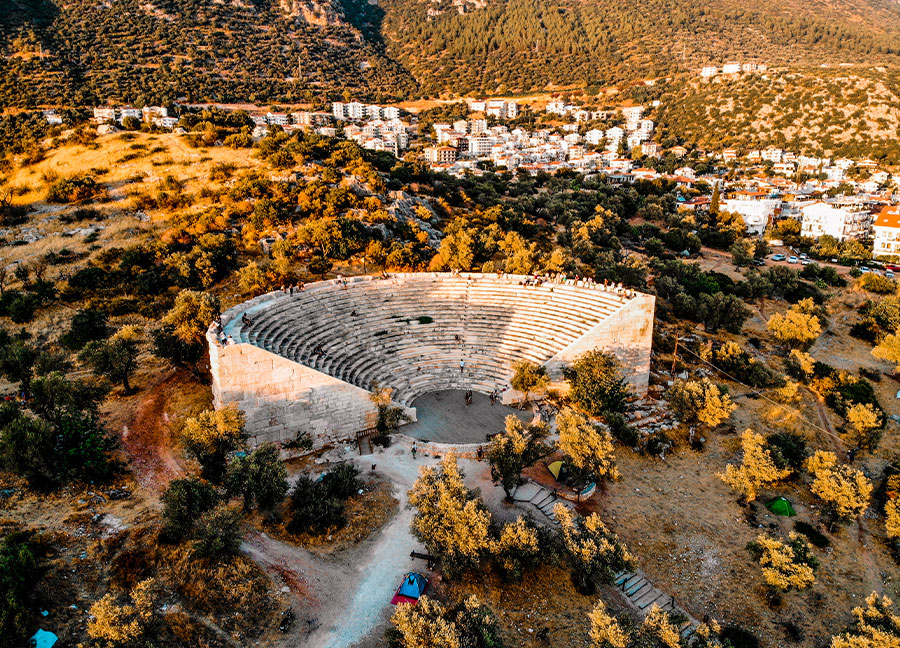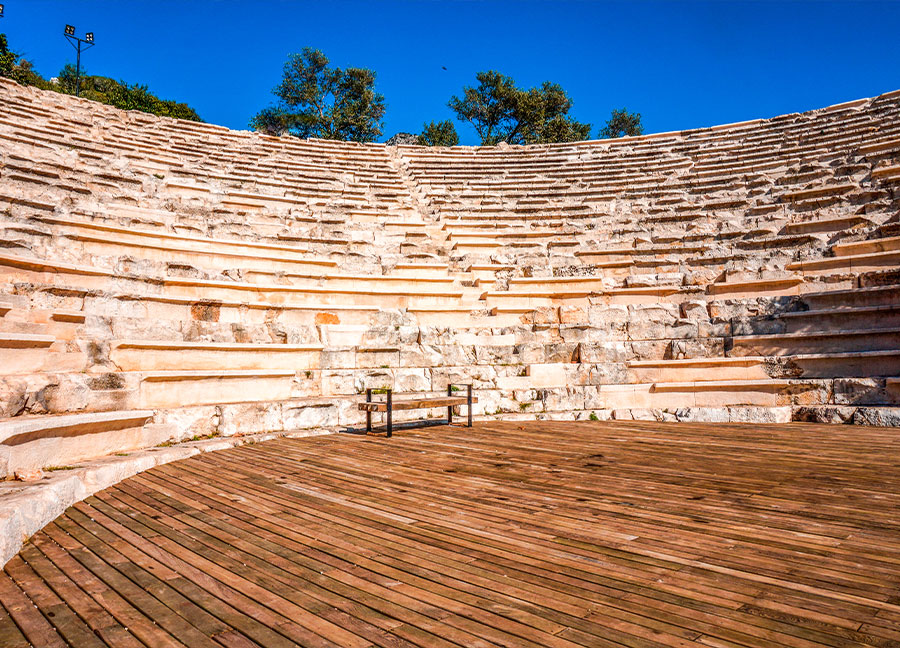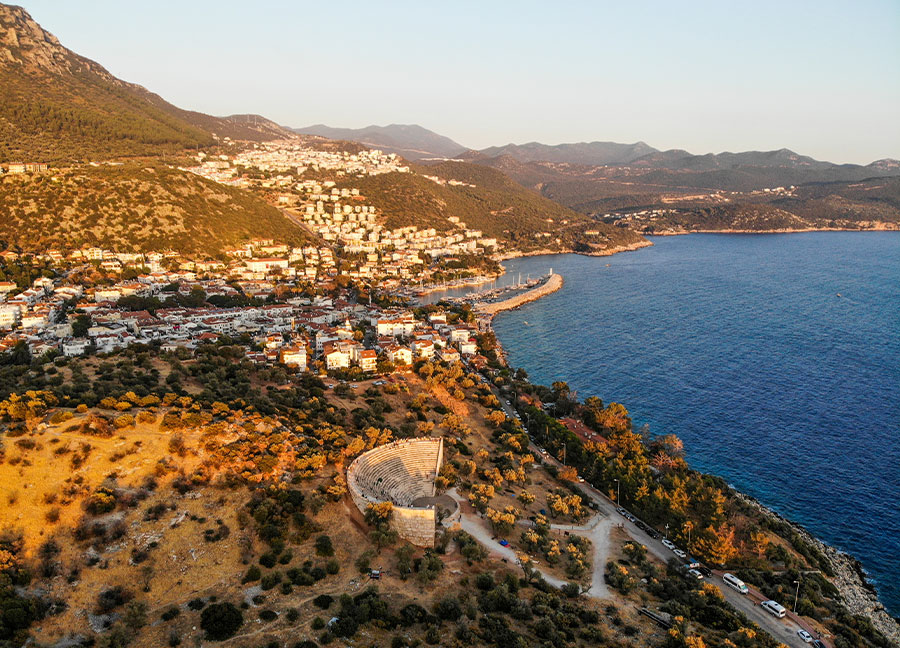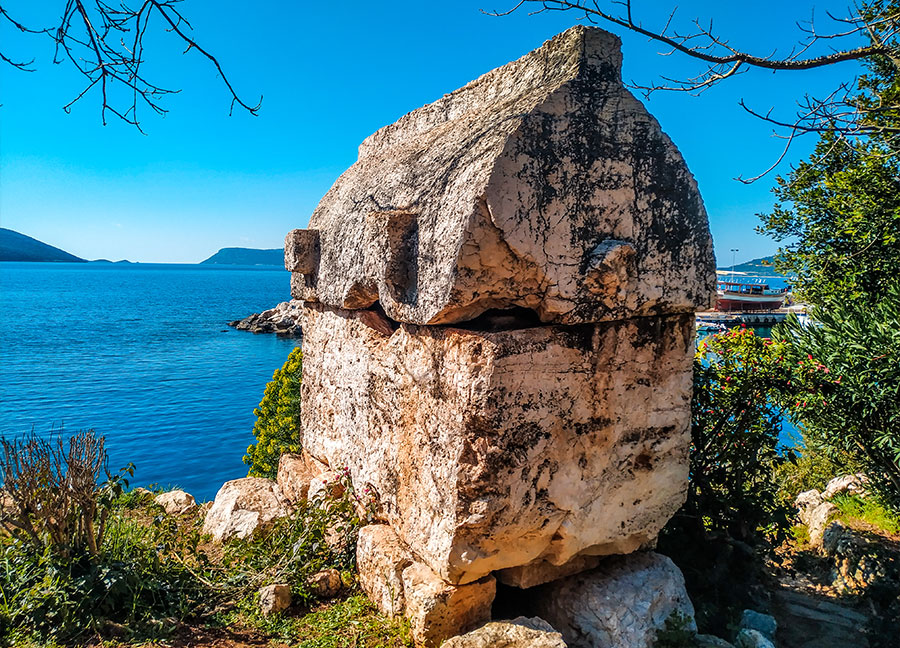Antiphellos Ancient City is in the Kaş district. It is one of the oldest settlements in the Lycian Region. Antiphellos is a small settlement in the 4th century BC, which was the port of the city of Phellos. However, at the beginning of the Hellenistic Period, it came to the fore more than the receding Phellos. During the Roman Period, the city, which increased its power by trading cedarwood and sponge diving, separated from being the port of Phellos and reached the position of a developed and wealthy city.
The finds belonging to the ancient city in Kaş can be seen around the district and along the peninsula extending in the east-west direction. There are Hellenistic city walls on the peninsula and the side facing Meis Island. There are remains of a temple to the southeast of the church, which has been converted into a mosque today, where the walls face the harbor.
One of the most worth seeing works of the Antiphellos Ancient City is its theatre. The 3000-seat theater to the south of the Acropolis hill leans against the hillside and faces the sea with 26 rows of seats. It has the distinction of being the only ancient theater in Anatolia with a seafront. There is a burial chamber with 24 female reliefs carved into the bedrock in the northeast of the theatre, which has an enormous stonework that belongs to the Hellenistic Age.
Another must-see structure is the 'Lion Sarcophagus', which is located in the Long Bazaar and is considered one of the symbols of the district. On both sides of the sarcophagus lids dating back to the 4th century BC, lion head reliefs were carved. There is an eight-line inscription in the Lycian language on it. Since the writings cannot be read, the sarcophagus, whose identity is unknown, was thought to have been built for a king, and therefore it was called the 'King's Tomb' among the people. The tombs carved into the rock on the slope behind the city, with their inscriptions and facade workmanship, constitute important examples of the Lycian Period tombs. Lycian-type sarcophagi are in the water around the port are, among other important structures.


